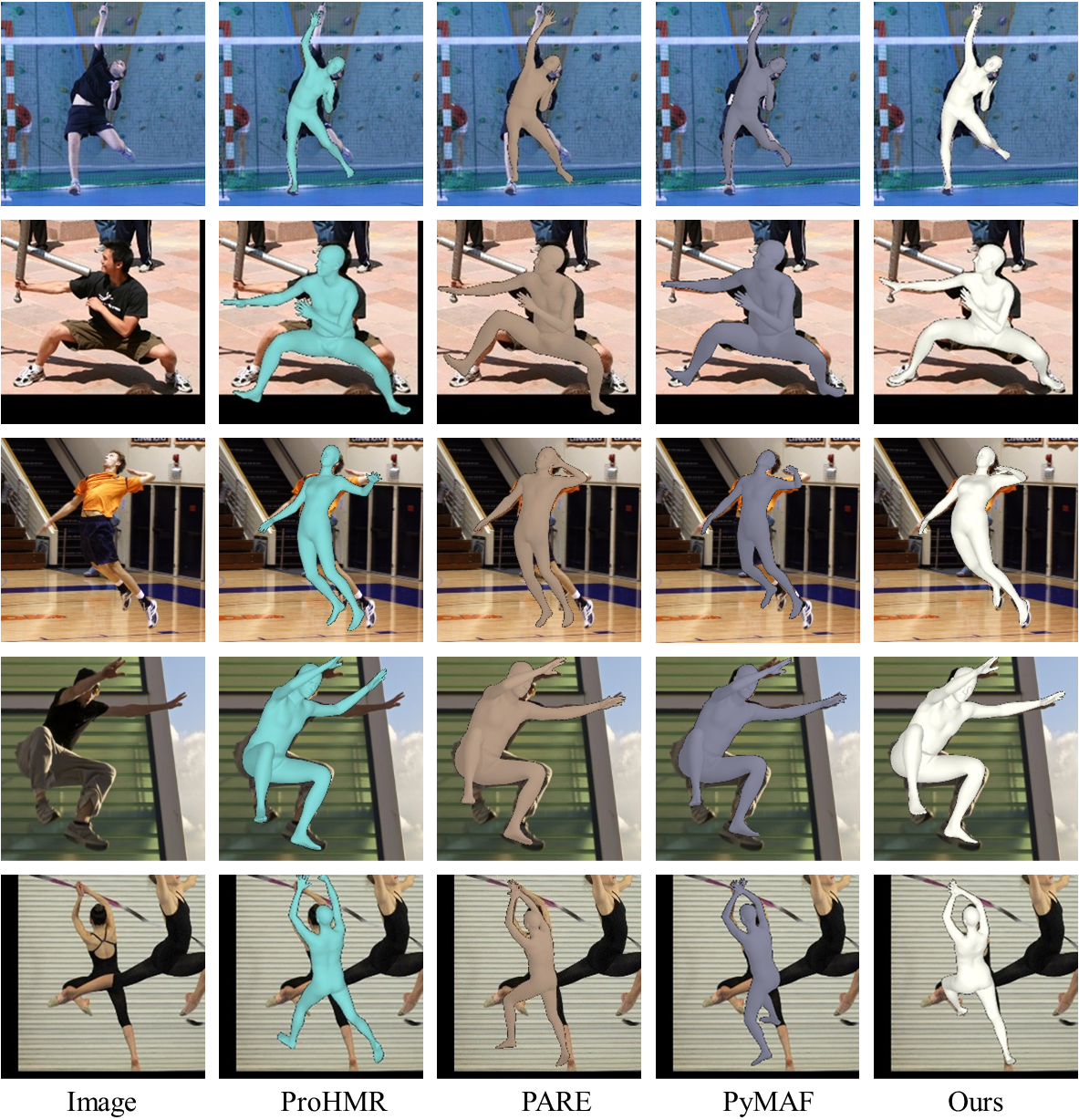Abstract
Recovering 3D human meshes from monocular images is an inherently ill-posed and challenging task due to depth ambiguity, joint occlusion, and truncation. However, most existing approaches do not model such uncertainties, typically yielding a single reconstruction for one input. In contrast, this paper embraces the ambiguity of the reconstruction and considers the problem as an inverse problem for which multiple feasible solutions exist. To address these issues, we propose a multi-hypothesis approach, MH-HMR, to efficiently model the multi-hypothesis representation and build strong relationships among the hypothetical features. Specifically, the task is decomposed into three stages: (1) generating a reasonable set of initial recovery results (i.e., multiple hypotheses) given a single color image; (2) modeling intrahypothesis refinement to enhance every single-hypothesis feature; (3) establishing inter-hypothesis communication and regressing the final human meshes. Meanwhile, we further take advantage of multiple hypotheses and our recovery process to achieve human mesh recovery from multiple uncalibrated views. Compared with state-of-the-art methods, our approach MH-HMR achieves superior performance and recovers more accurate human meshes on challenging benchmark datasets like Human3.6M and 3DPW, while demonstrating our effectiveness across a variety of settings. The code will be publicly available for research purposes.
Teaser

We propose a multi-hypothesis method to recover a 3D human mesh from a monocular image. Right: results of the probabilistic method ProHMR [11], the state-of-the-art (SOTA) method PARE [9] and our method for a challenging image.
Framework Overview

Overview of the proposed method. Given an input monocular image I, we perform probabilistic modeling (a) with normalizing flows to extract image features, predict a pose distribution and generate multiple initial human mesh hypotheses (where N indicates the number of hypotheses), input these multi-hypotheses into the Intra-hypothesis refinement module (b) for independent refinement and feature enhancement, use the Inter-hypothesis communication module (c) to implement their communication, and finally regress to obtain the recovered human mesh M.
Results

Qualitative results on LSP dataset. From left to right shows the input images, and the results of ProHMR, PyMAF, PARE and ours.

Plausible human mesh recovery results generated by our method, especially for ambiguous parts with depth ambiguity, joint occlusion and truncation..
BibTeX
@inproceedings{xuan2022mhpro,
title={MHPro: Multi-hypothesis Probabilistic Modeling for Human Mesh Recovery},
author={Xuan, Haibiao and Zhang, Jinsong and Li, Kun},
booktitle={Artificial Intelligence: Second CAAI International Conference, CICAI 2022, Beijing, China, August 27--28, 2022, Revised Selected Papers, Part I},
pages={216--228},
year={2022},
organization={Springer}
}
@article{xuan2023mhhmr,
title = {MH-HMR: Human Mesh Recovery from Monocular Images via Multi-Hypothesis Learning},
author = {Haibiao Xuan and Jinsong Zhang and Yu-Kun Lai and Kun Li},
booktitle = {CAAI TRIT},
year={2023}
}